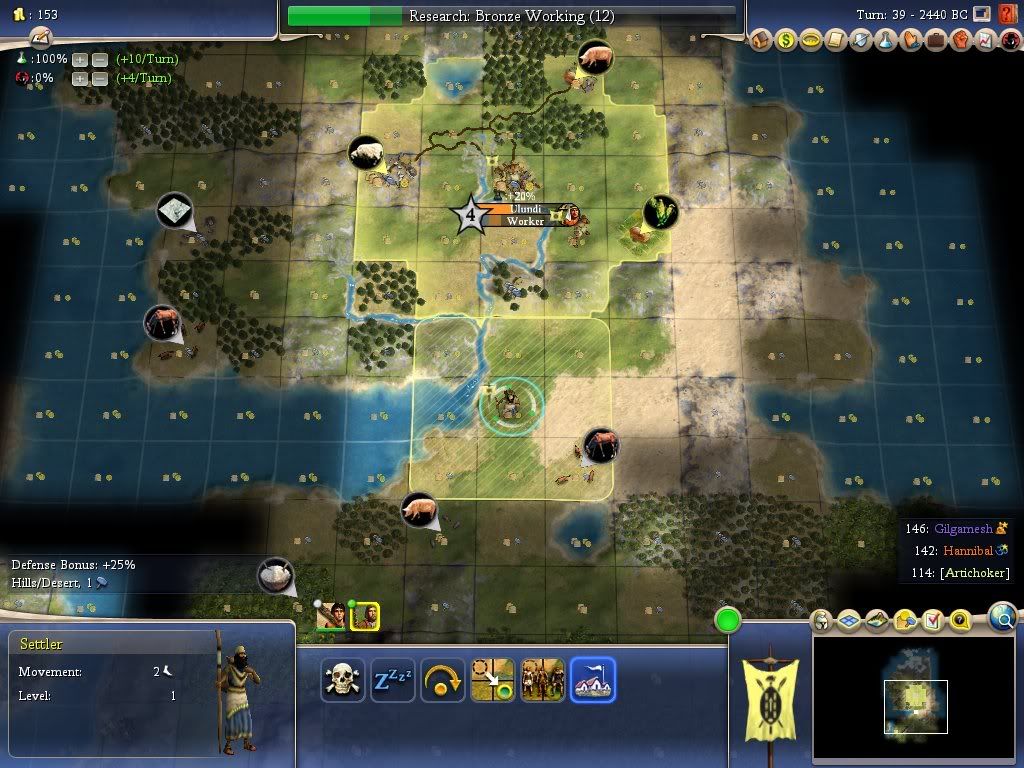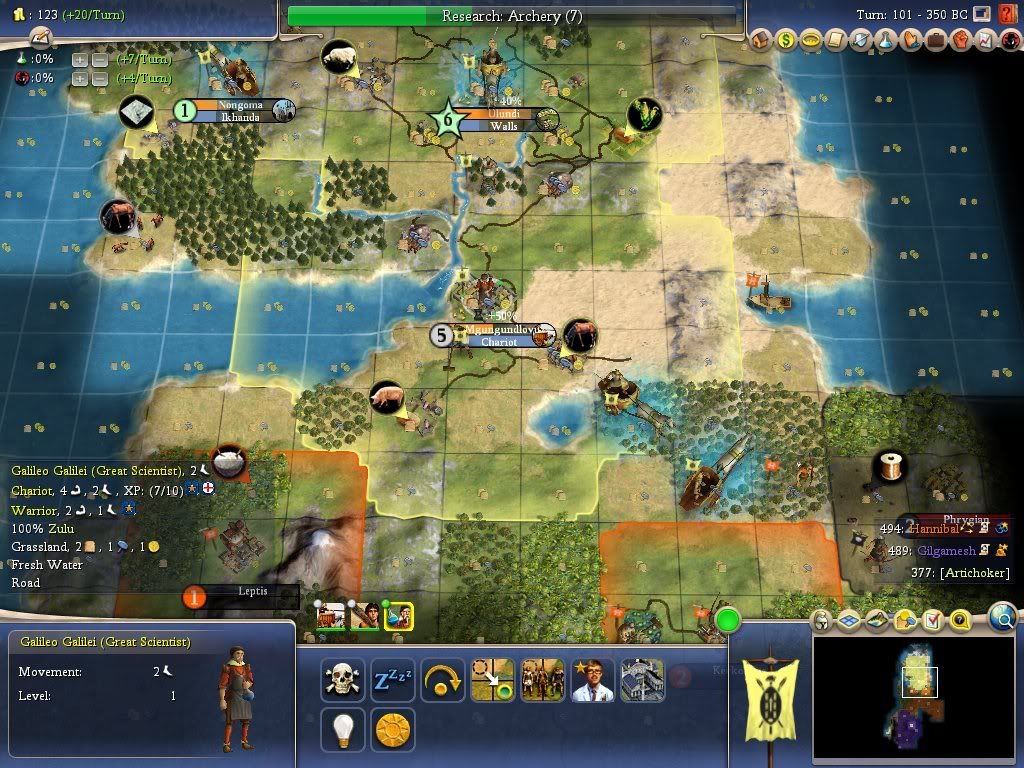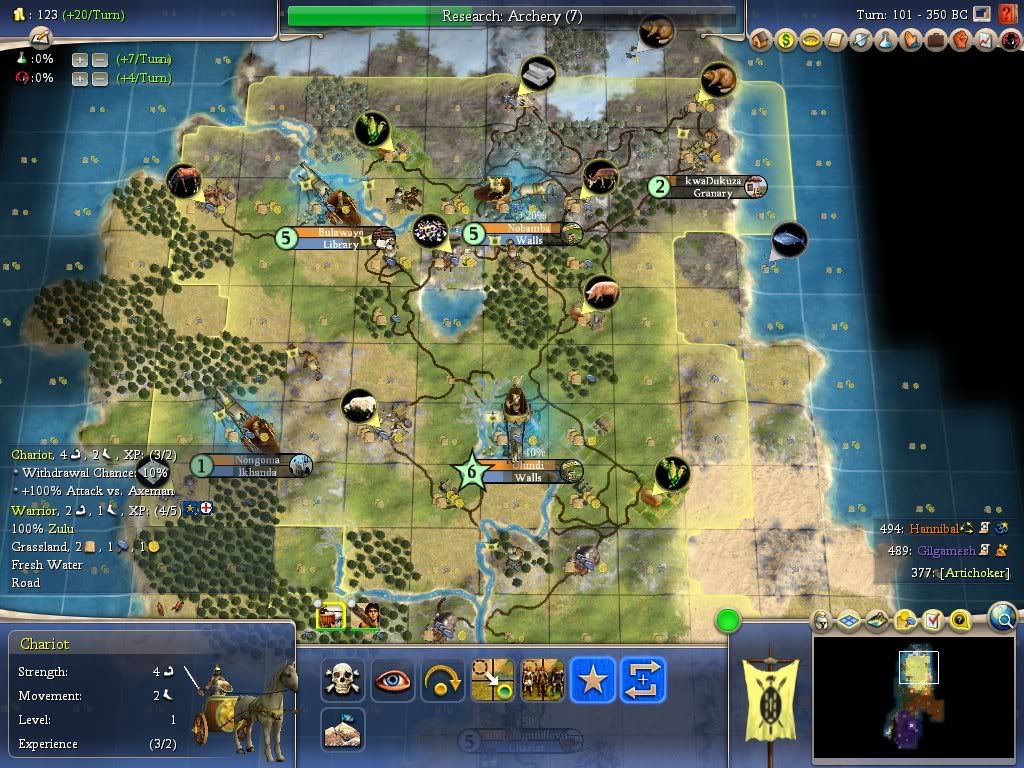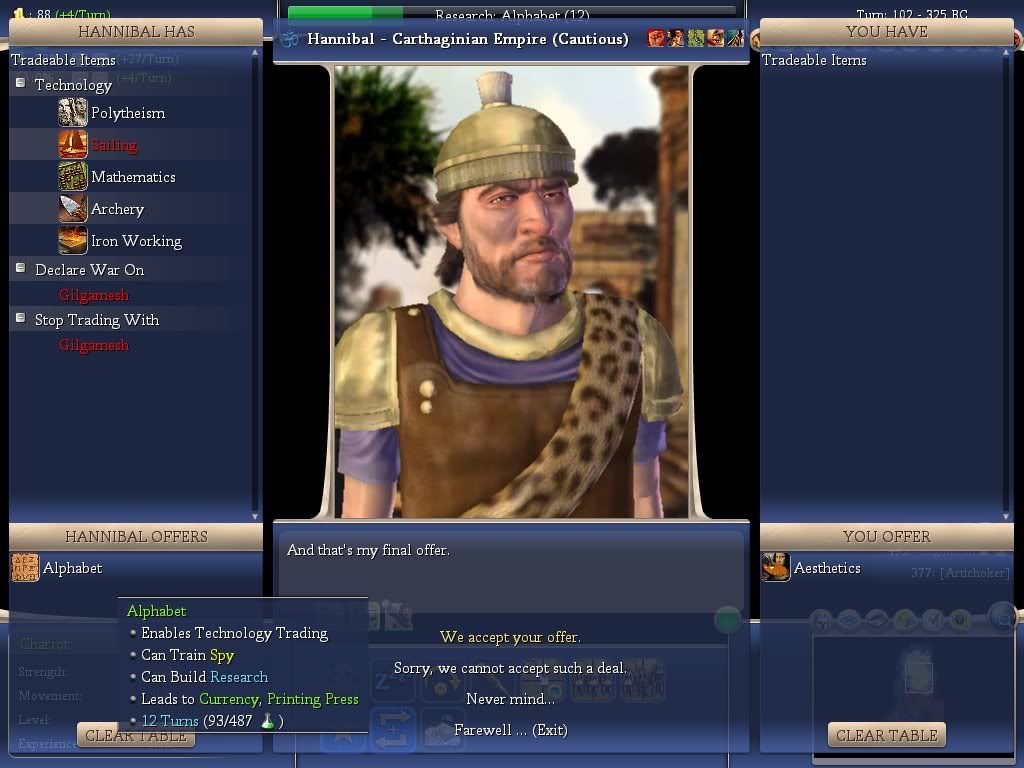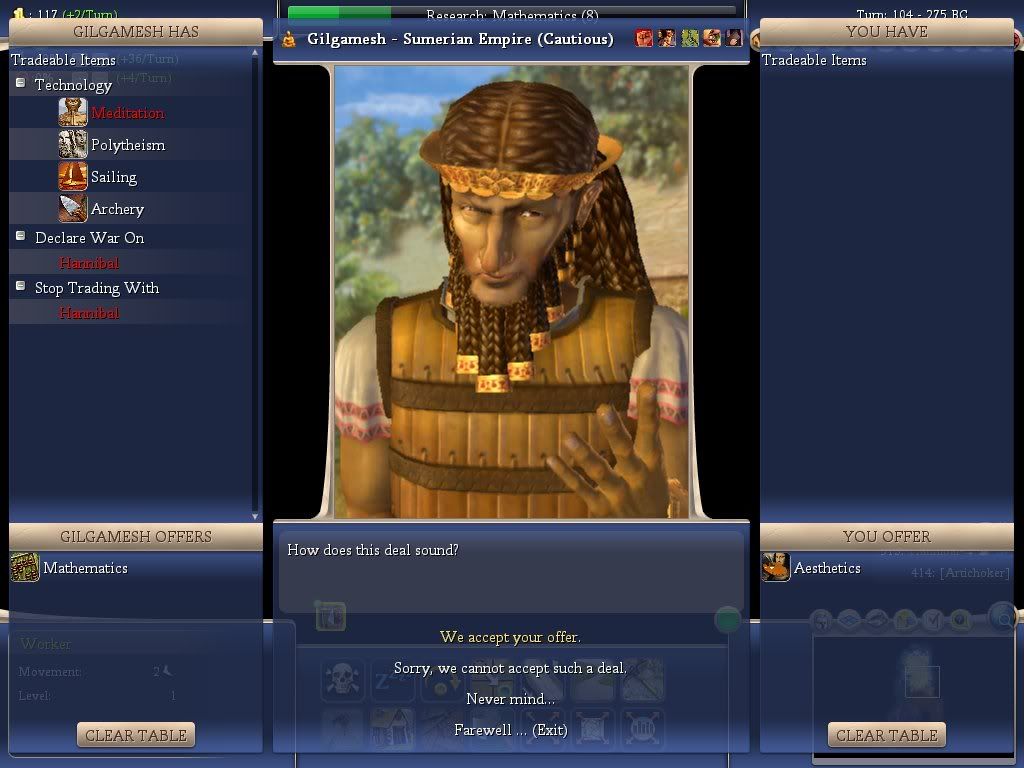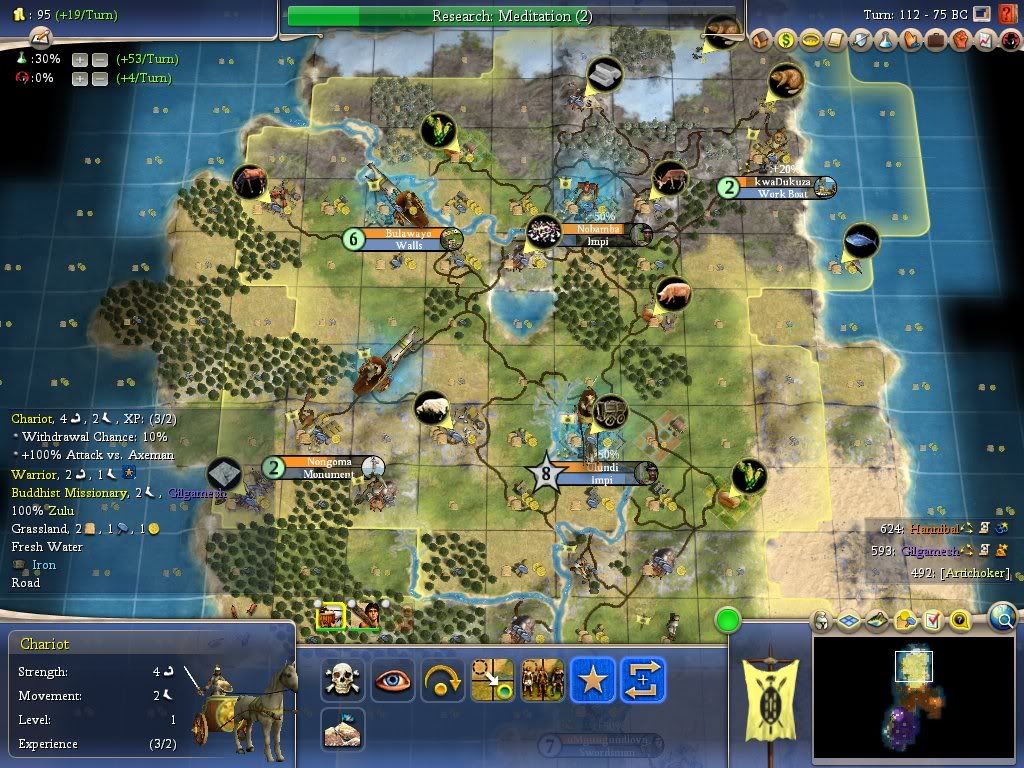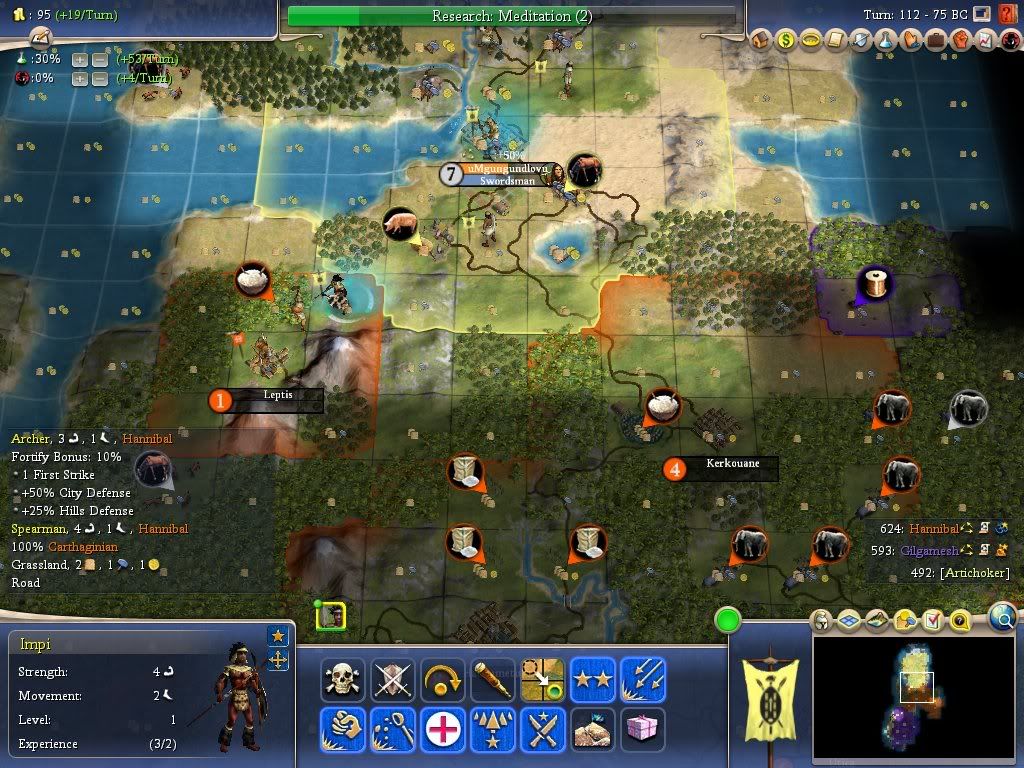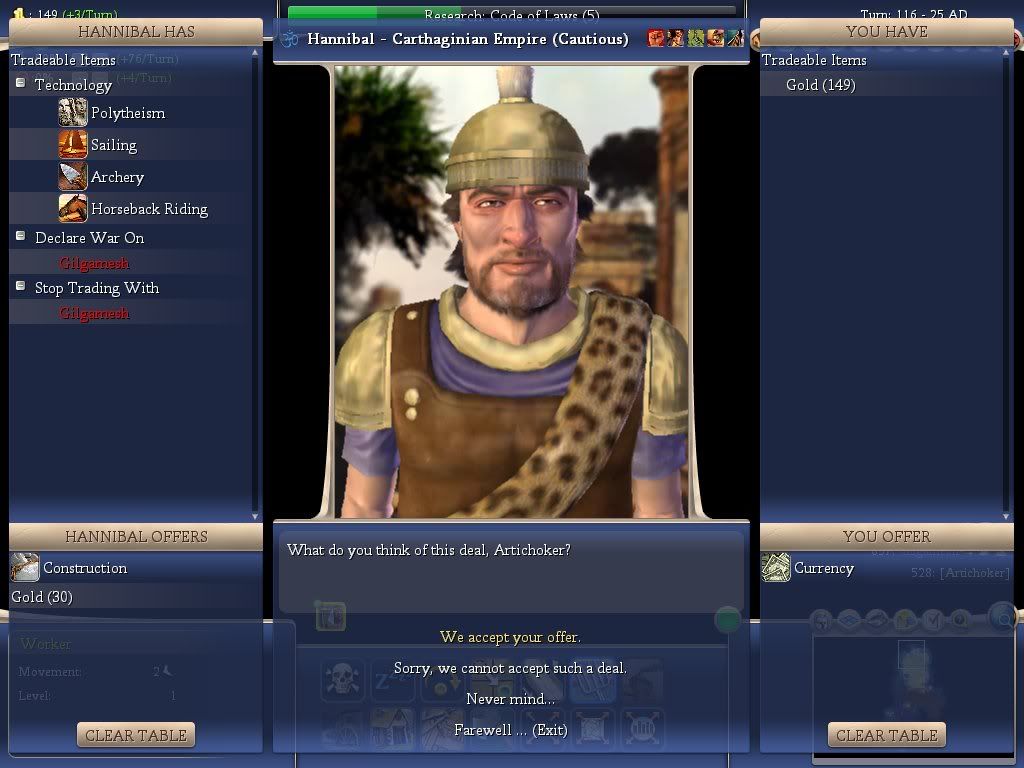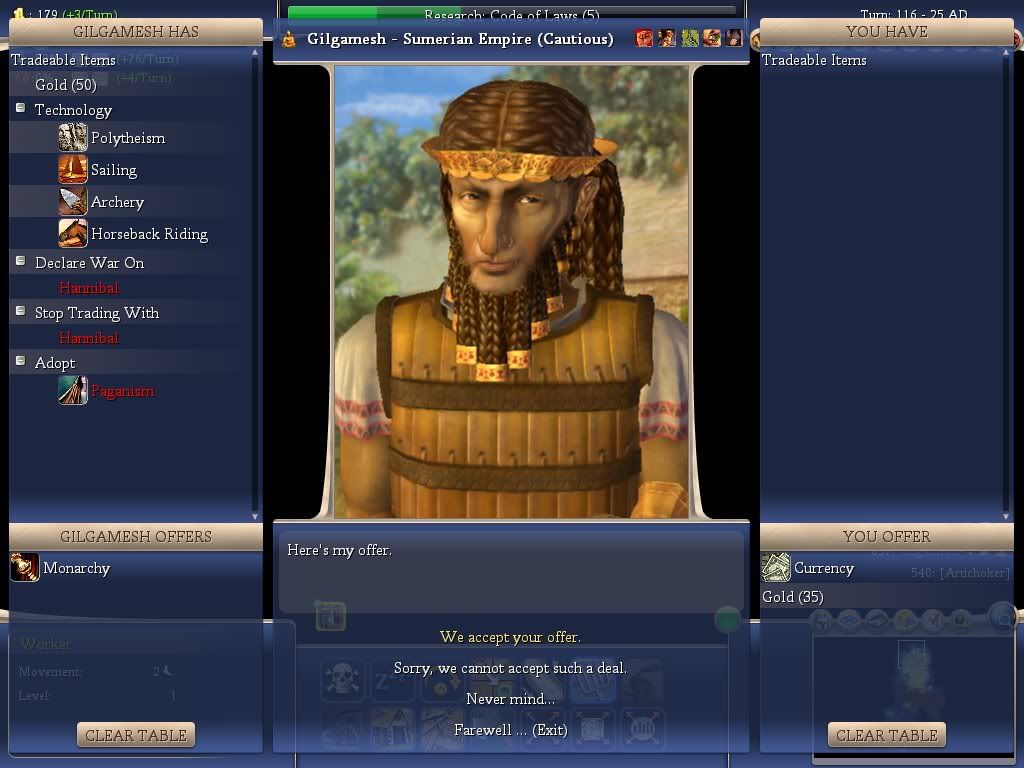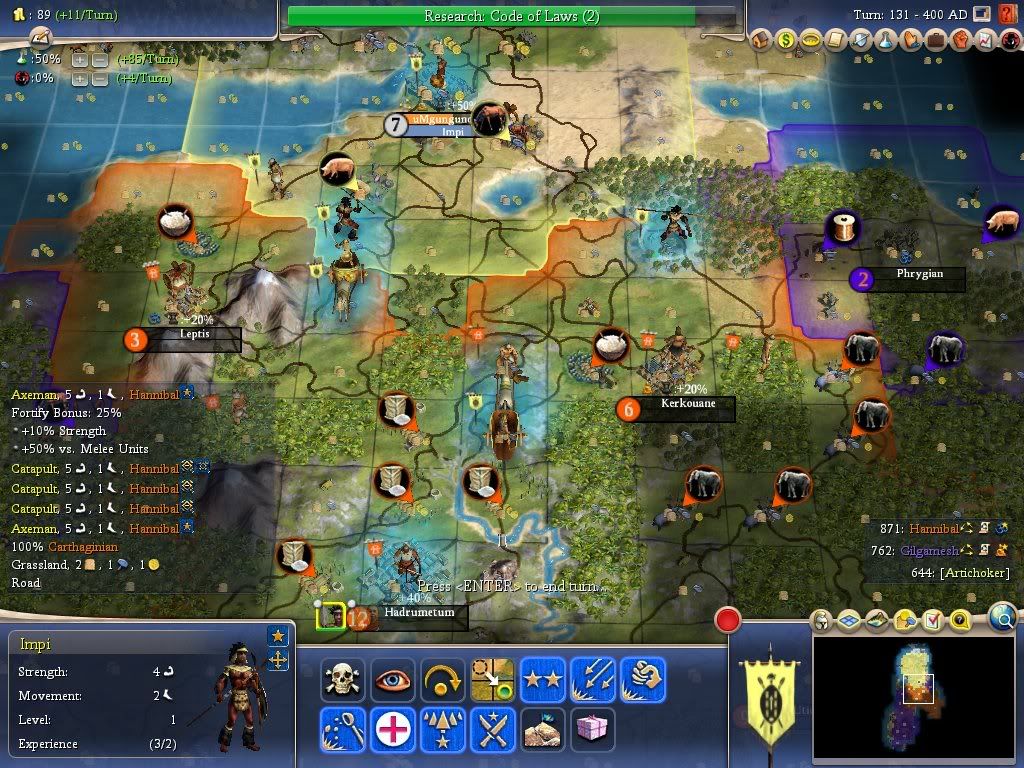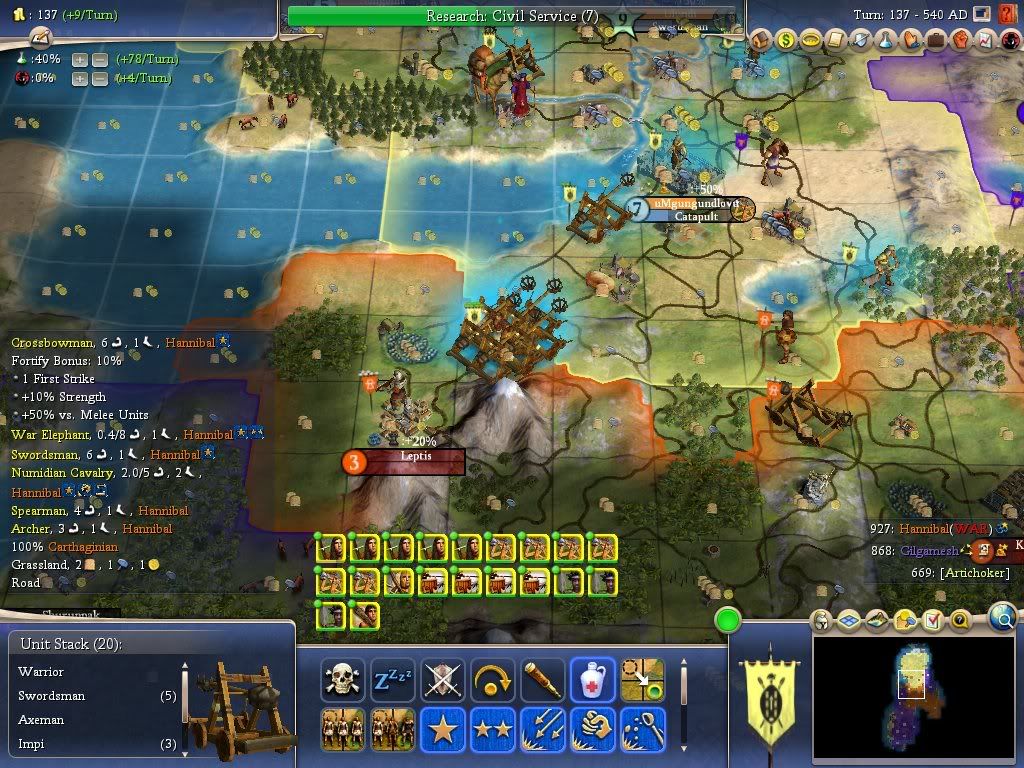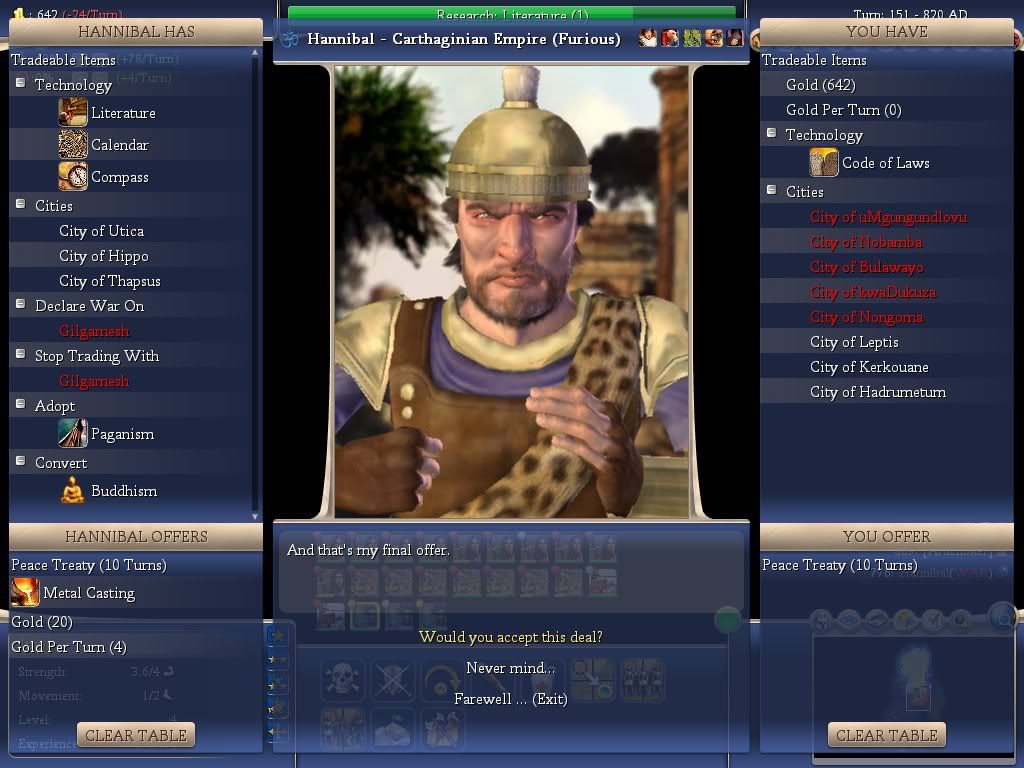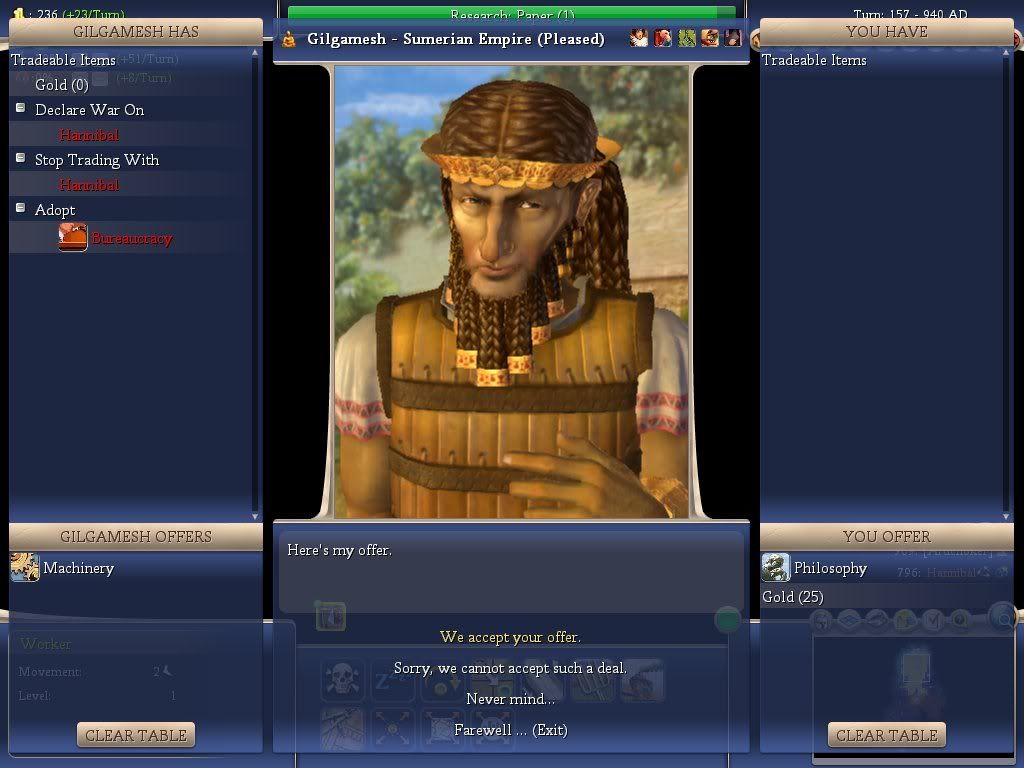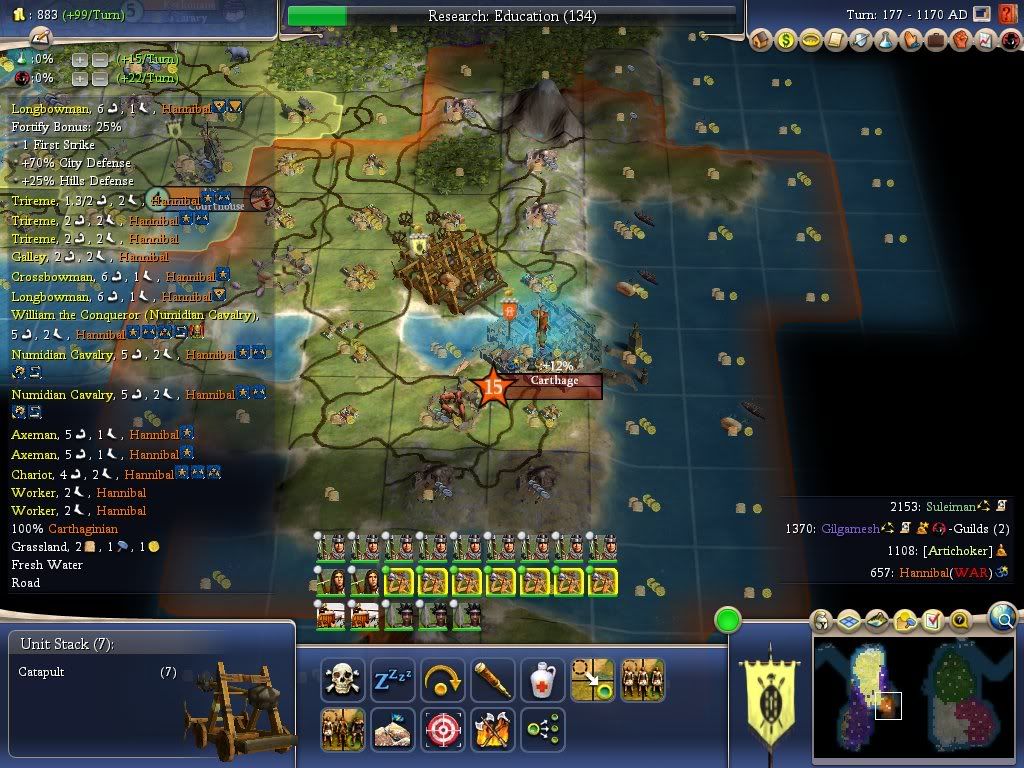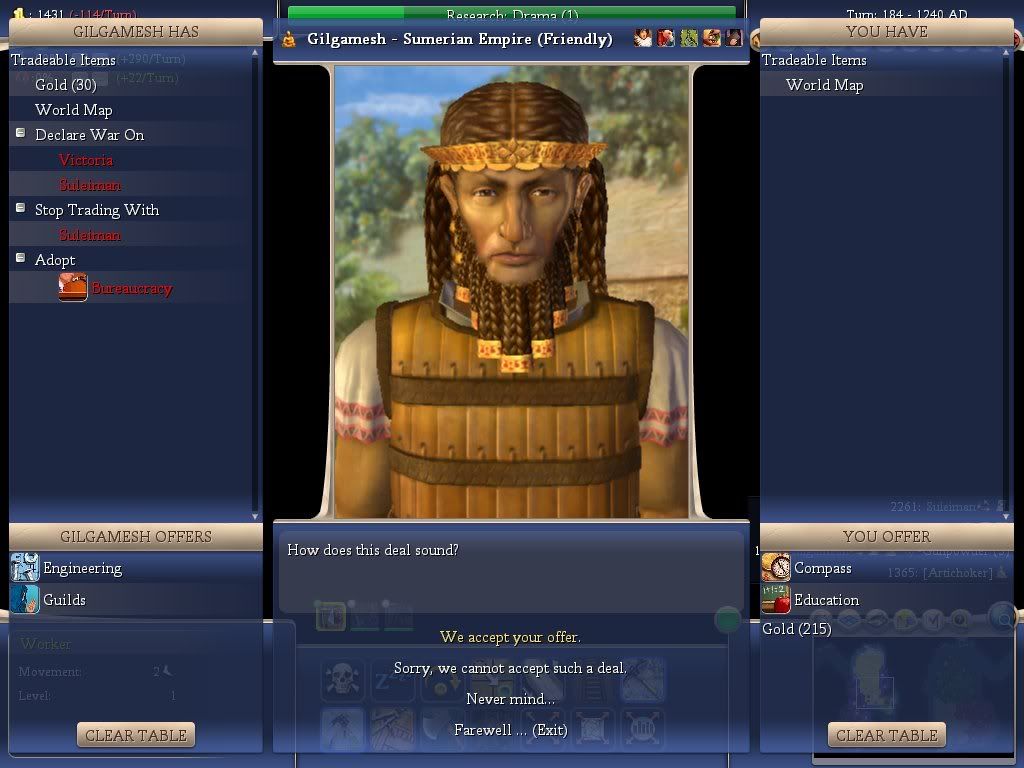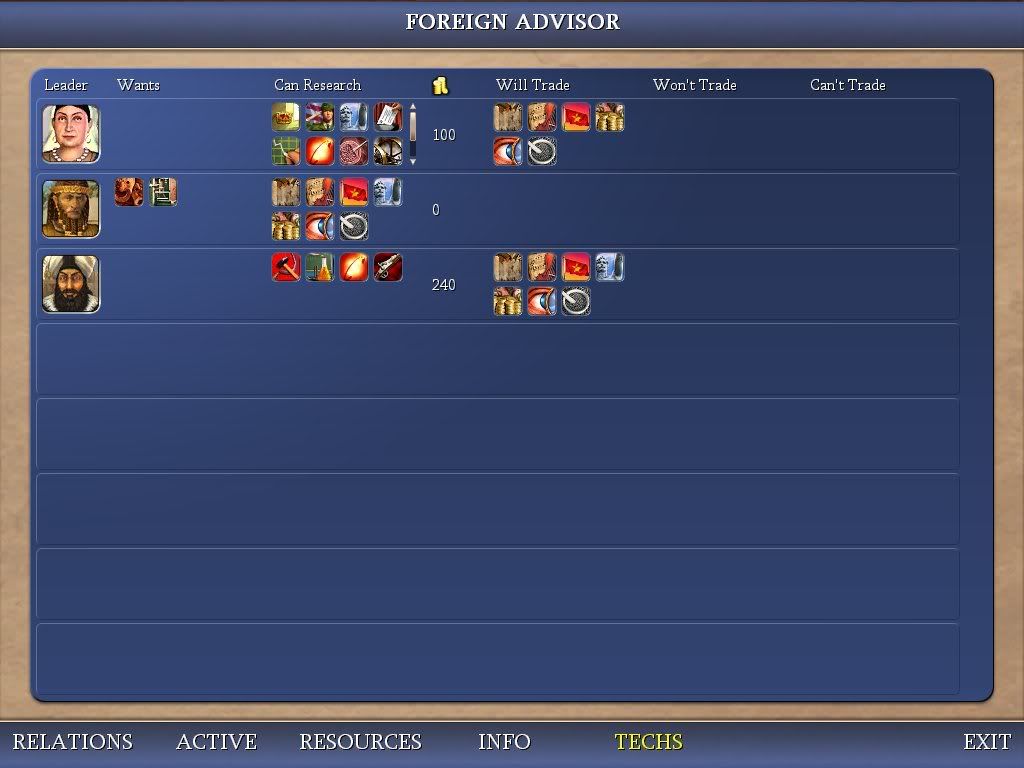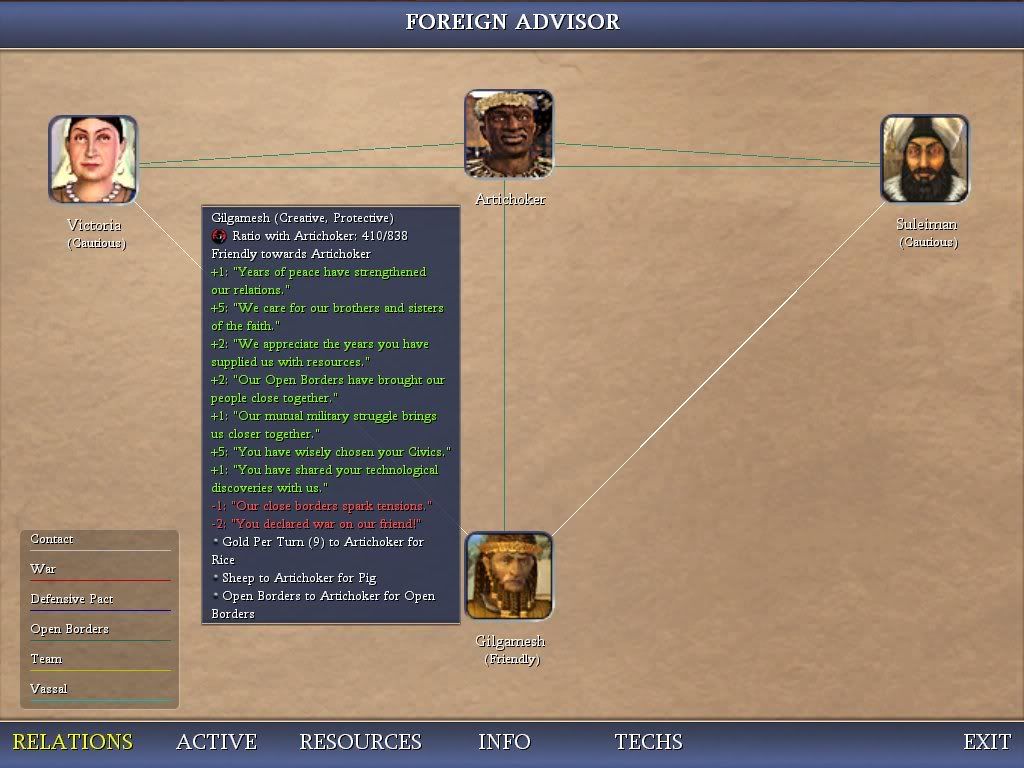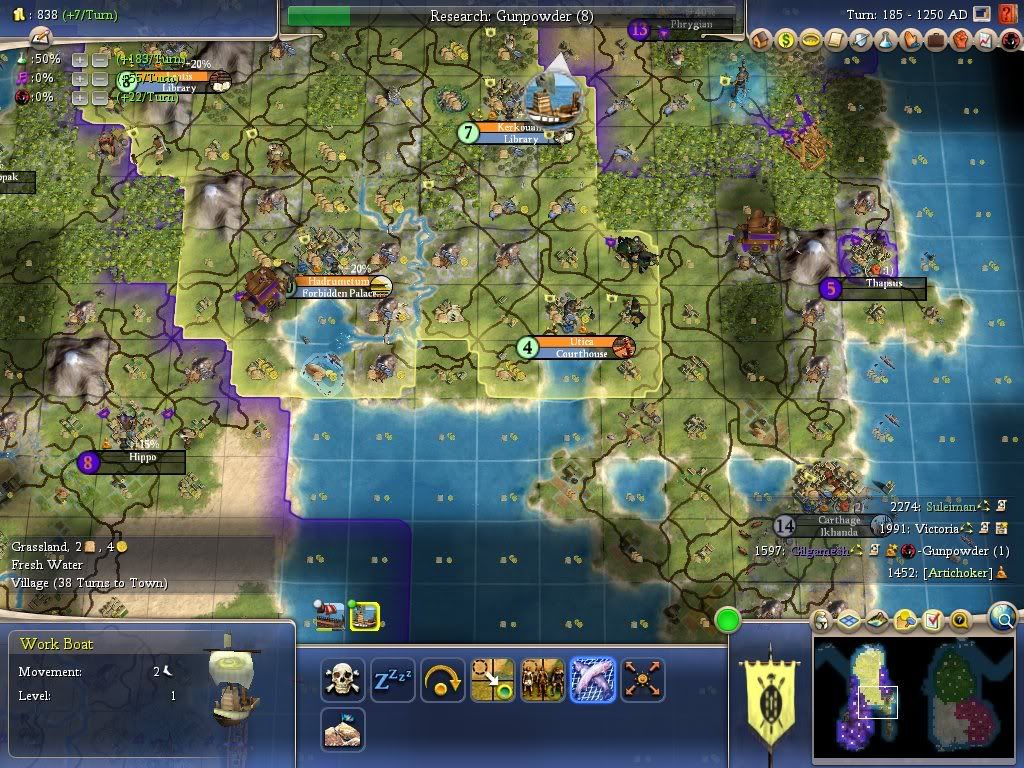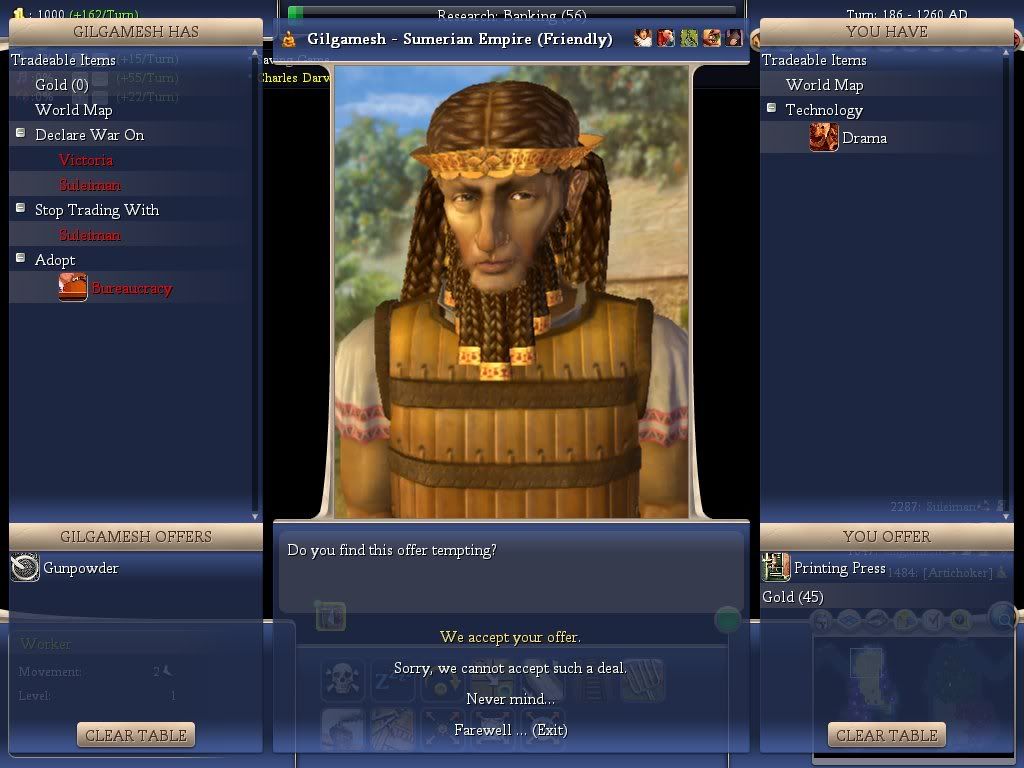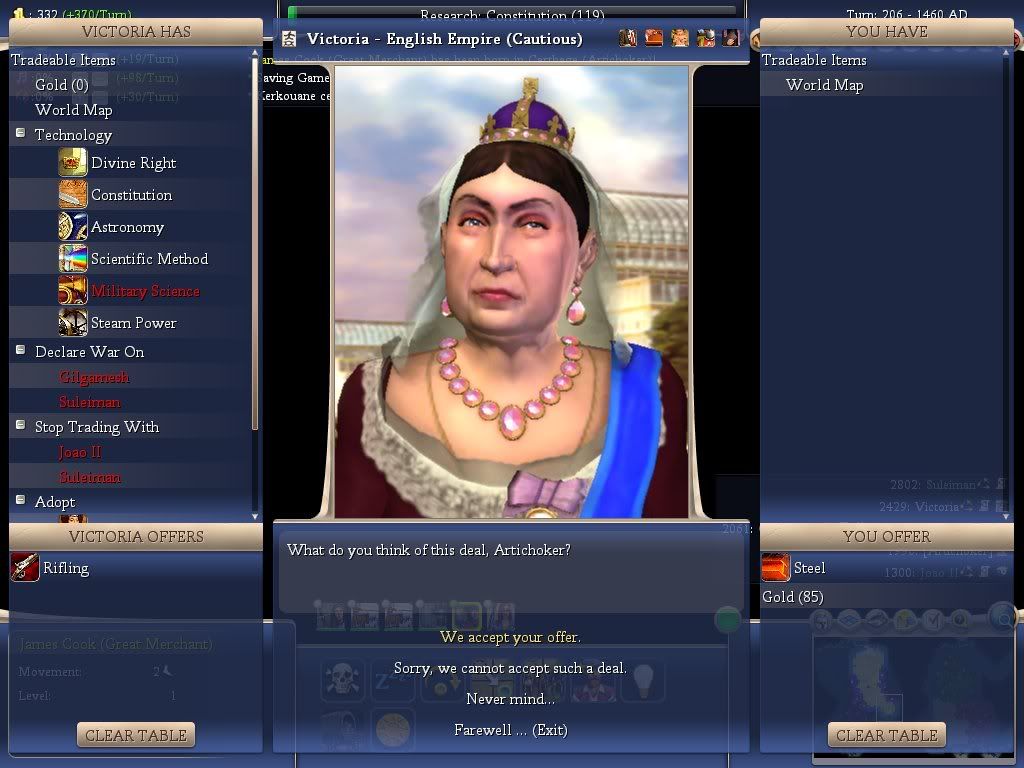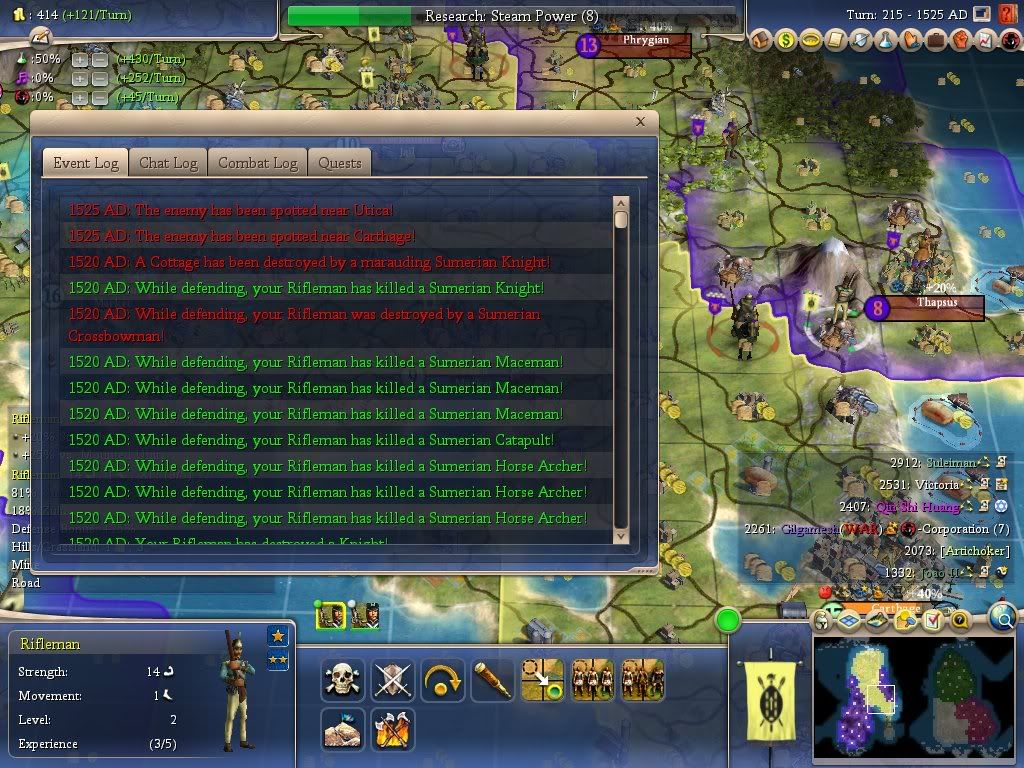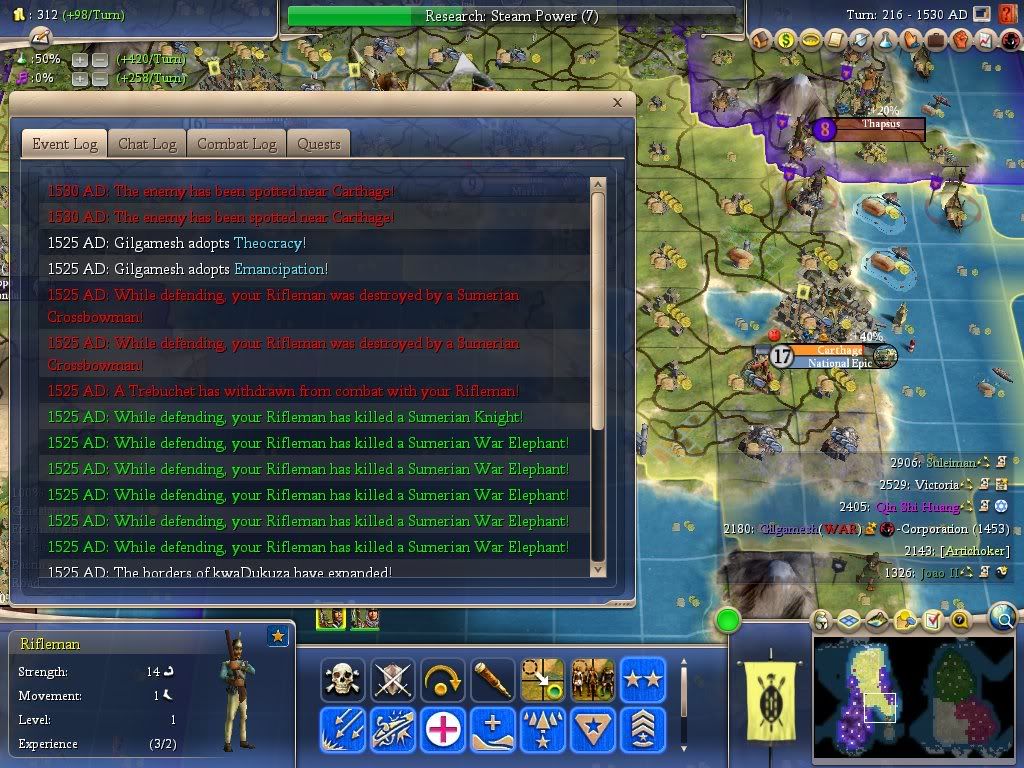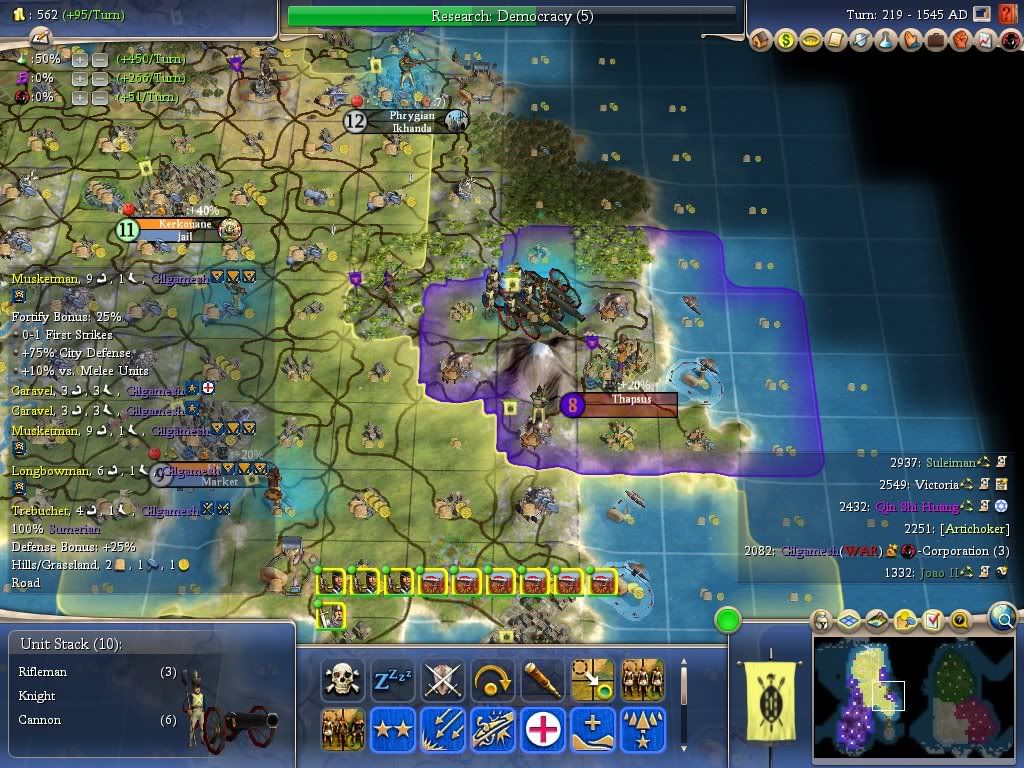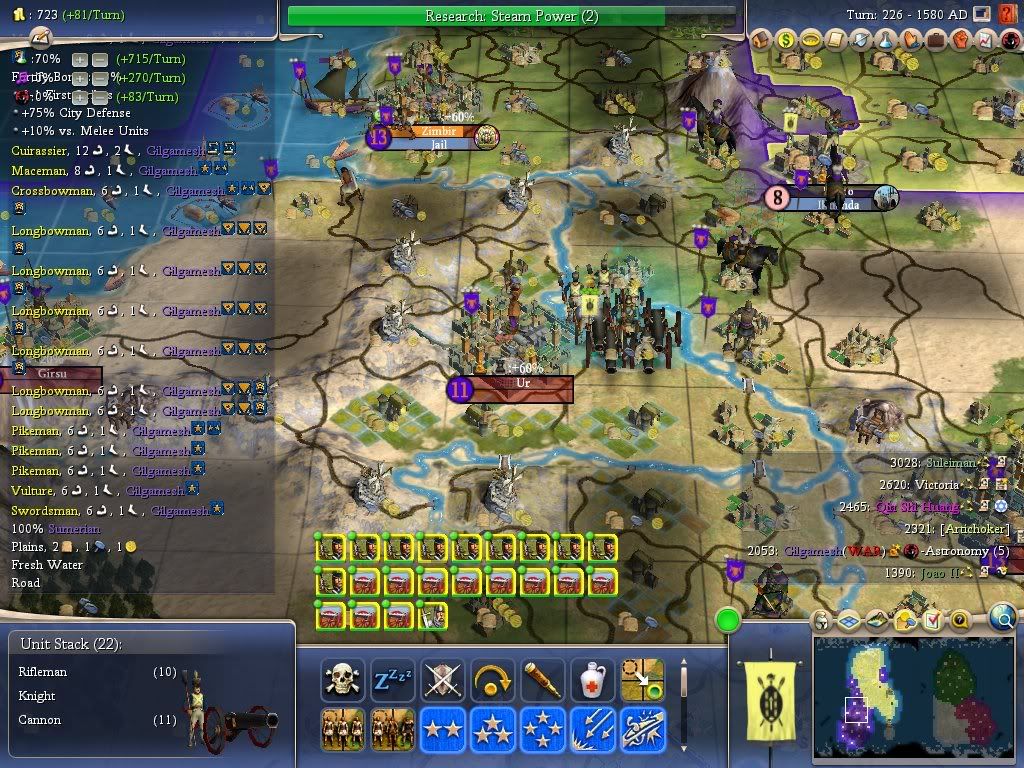Artichoker
Emperor
- Joined
- Dec 21, 2007
- Messages
- 1,711
Leveraging Vassalage VI - Tokugawa's Great Great Nephew, Shaka
"I will tell you a secret, fellow warriors of Zululand...I am descended from the land of the Samurai, and the Assegai you are holding in your hand is forged from the secret arts of Japanese weaponsmiths. Know that Zulu blood alone does not guarantee victory in battle. You must summon your inner Ki, in order to make every spear thrust deadly. Do not let the enemy gain an inroad on your defensive front...and always remember, aim for the heart!"
Welcome to the 6th thread in the Leveraging Vassalage series. First, I would like to summarize both the purpose and format of this thread:
1) The focus of this thread is using the Vassalage civic to help progress toward a victory. While playing the games in this thread, we are not trying to compare Vassalage to other civics such as Bureaucracy, but rather trying to maximize the efficiency of Vassalage itself, when viewed in the context of the whole game. I will use different civics in combination with Vassalage, depending on the situation in each game.
2) There will now be 3 different starts in this thread. Each start will use the leader Shaka and will have the settings Immortal and Normal Speed, and 3 different map types will be chosen. I will play through approximately 1 AD before posting the start, but anyone is welcome to discuss early-game strategy based on the earlier screenshots I provide.
3) I will sometimes start a discussion regarding possible strategy, based on certain screenshots that I provide. Even though I may have played well beyond that point, I will try to run the discussion as if I didn't have prior knowledge of the outcome of the game past that point.
And now, the first start. I have chosen Continents to be the map type of the first start.

Here is the save:
"I will tell you a secret, fellow warriors of Zululand...I am descended from the land of the Samurai, and the Assegai you are holding in your hand is forged from the secret arts of Japanese weaponsmiths. Know that Zulu blood alone does not guarantee victory in battle. You must summon your inner Ki, in order to make every spear thrust deadly. Do not let the enemy gain an inroad on your defensive front...and always remember, aim for the heart!"
Welcome to the 6th thread in the Leveraging Vassalage series. First, I would like to summarize both the purpose and format of this thread:
1) The focus of this thread is using the Vassalage civic to help progress toward a victory. While playing the games in this thread, we are not trying to compare Vassalage to other civics such as Bureaucracy, but rather trying to maximize the efficiency of Vassalage itself, when viewed in the context of the whole game. I will use different civics in combination with Vassalage, depending on the situation in each game.
2) There will now be 3 different starts in this thread. Each start will use the leader Shaka and will have the settings Immortal and Normal Speed, and 3 different map types will be chosen. I will play through approximately 1 AD before posting the start, but anyone is welcome to discuss early-game strategy based on the earlier screenshots I provide.
3) I will sometimes start a discussion regarding possible strategy, based on certain screenshots that I provide. Even though I may have played well beyond that point, I will try to run the discussion as if I didn't have prior knowledge of the outcome of the game past that point.
And now, the first start. I have chosen Continents to be the map type of the first start.
Spoiler :

Here is the save:

